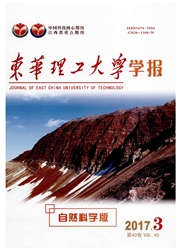

 中文摘要:
中文摘要:
囊谦古近纪盆地贡觉组沉积充填系列中的第三层段为一套盐湖相暗紫红色泥岩、粉砂质泥岩和膏盐岩为主交互产出的地层,沉积厚度显示南北厚而中部薄的特点。通过野外地质路线调查和室内综合研究,系统分析了贡觉组第三层段膏盐岩分布特征、膏盐岩类型及石膏的晶体形态,该套膏盐岩层自下而上逐渐增厚,以块状石膏岩、膏灰岩和泥膏岩为主,并发育多个蒸发岩沉积序列。选取贡觉组第三层段不同地区的蒸发岩硫同位素组成进行分析,结果表明其δ34S的变化幅度为14.7‰-22.6‰,平均值为16.8‰,位于古近纪海相蒸发岩中硫酸盐的δ34S值范围内且显著区别于缺氧环境中的δ34S值,认为该层段时期湖盆为封闭的陆相盐湖,细菌的还原作用微弱,其对石膏硫同位素的分馏作用贡献甚微。通过对贡觉组第三层的膏盐岩和硫同位素特征分析,并结合现有的盐泉水化学分析资料,推测囊谦盆地具备探盐找钾、硼和锂的理想条件。
 英文摘要:
英文摘要:
The Nangqen basin is a typical representative of the medium-mini-type Paleogene basins, which consist of basic cyclicity of alternating claret-colored detrital rocks and gypsum-salt rock of saline lacustrine facies in the member 3 of gonjo formation. The depositional thickness show that the characteristics of thicker in southern and northern area is higher than that of central area. The distributional features and rock types of gypsolyte and the crystalline morphology of gypsum in the member 3 of gonjo formation were studied by means of field geological ob- servations and indoors research, suggest that the gypsolyte thickness becomes thicker from lower to upper, and that its lithology is characterized mainly by the massive gyprock, gypsum limestone and argillaceous gypsum, and that several evaporite sedimentary sequences were developed within the member 3 of gonjo formation. In order to determine the origin of evaporite, the evaporites in different areas of the member 3 of gonjo formation and measured sulfur isotopes in gypsum are analyzed. The results showed that the δ^34S values of gypsum and anhydrite varied from 14.7‰ to 22.6‰, with a median of 16.8‰, which are in the scope of the δ^34S curve in the Paleogene marine evaporites and are quite different to the δ^34S values in the oxygen-deprived environments. The study identi- fied that Nangqen salt-lake was a continental brackish lake and the depositional environment was closed to sulfate, and that there is a reducing action of bacteria with feeble that has little contributions to the fractionation of gypsum sulfur isotope. Based on the characteristic analysis of gyprock and sulfur isotopes, combined with the information of salt spring water chemical analysis, the Gonjo formation of Nangqen basin is favorable to explore potash, lithium and boron.
 同期刊论文项目
同期刊论文项目
 同项目期刊论文
同项目期刊论文
 期刊信息
期刊信息
